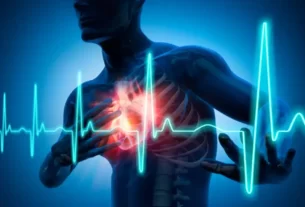Angina pectoris is a sensation of discomfort or chest pain (or in surrounding areas) caused by reversible myocardial ischemia—a temporary reduction in blood flow to the heart muscle that does not lead to a heart attack. It is also known as angor.
Clinically, it is referred to as unstable angina when there is a sudden change in coronary blood flow that does not yet result in a myocardial infarction. In angina, there is no cell death, whereas in a heart attack, heart muscle cells are irreversibly damaged.
Unstable angina often presents with increased intensity, frequency, or duration of episodes. About 15% of cases progress to acute myocardial infarction. The mortality rate within the first year after diagnosis is around 10%, highlighting the importance of identifying high-risk patients.
Typically, unstable angina is triggered by the rupture or fissuring of an atheromatous plaque, which leads to platelet aggregation and coronary vasoconstriction, further reducing blood supply to the heart.
Types of Unstable Angina
Unstable angina can present in several clinical forms:
- Rest angina.
- New-onset angina: when symptoms began less than one month ago (some experts extend this to two months).
- Progressive angina: when previously stable angina worsens in frequency, duration, or intensity.
- Post-infarction angina.
- Variant or Prinzmetal’s angina: usually occurs at rest and is frequently considered a form of unstable angina, although the underlying mechanisms differ. Most experts categorize it separately.
Treatment and Management
Management strategies depend on various prognostic factors identified through clinical history and diagnostic tests. These factors guide therapeutic decisions.
Patients with more intense or prolonged chest pain, and those showing abnormalities in their electrocardiogram or blood work, are considered higher risk. These individuals are typically admitted to a coronary care unit (CCU).
Treatment is generally more aggressive, involving cardiac catheterization, potential angioplasty, and the use of strong antiplatelet therapy along with anticoagulants to reduce complications and improve long-term survival.



